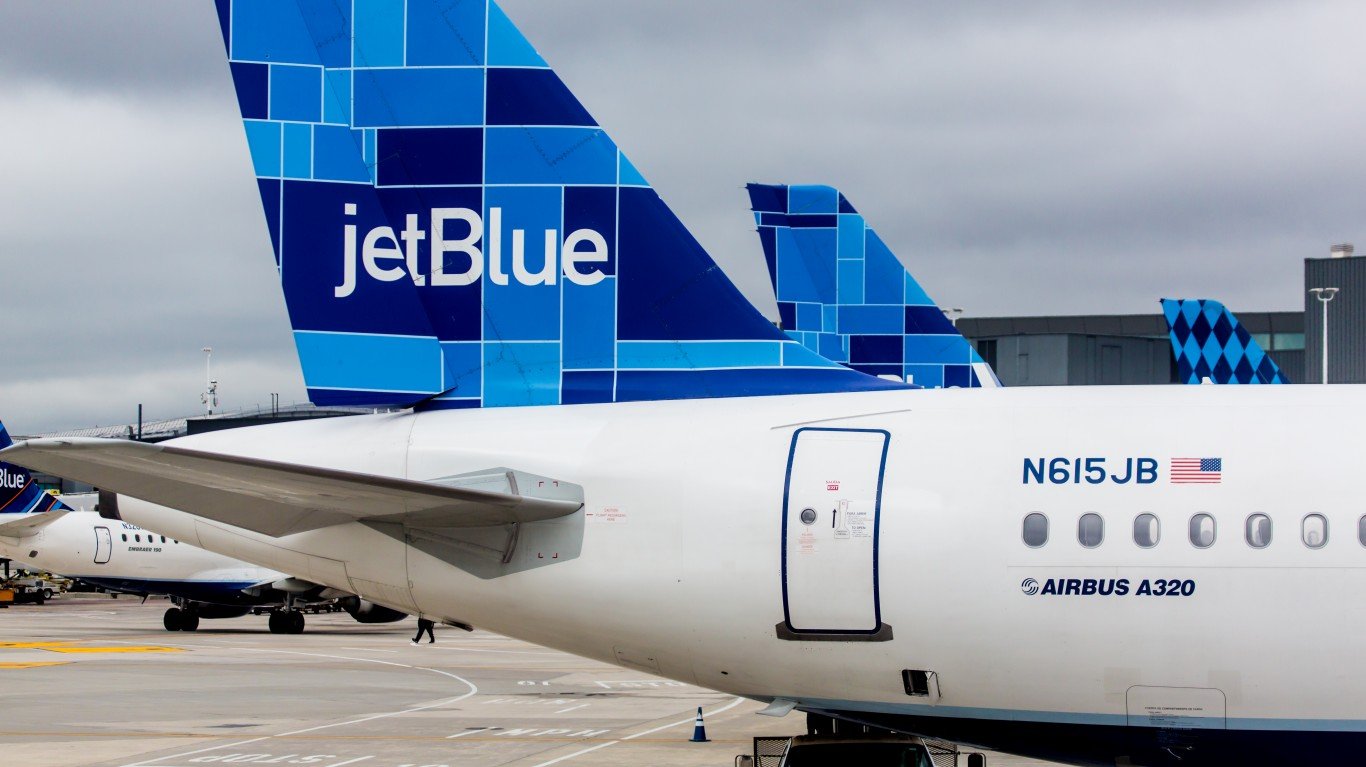

In a U.S. Securities and Exchange Commission filing Monday morning, JetBlue Airways Corp. (NASDAQ: JBLU) put more air under the wings of U.S. airlines. Airline stocks had a solid trading day last Friday, with most U.S. carriers adding between 3% and nearly 6% to their share prices.
Low-cost carriers JetBlue and Spirit Airlines, along with American Airlines, posted the largest gains Friday. United, American and Southwest all posted new 52-week highs. The American Rescue Plan Act (ARPA), signed into law on Thursday by President Biden, included payroll support for U.S. airlines, giving them the financial backing they needed to keep workers on-board while an expected increase in travel shapes up as summer approaches.
JetBlue, in its operational and financial update, said that first-quarter traffic would be about 41% below last year’s total, roughly in line with a previous estimate of a 40% decline. The better news is that JetBlue now expects leisure traffic to be down between 61% and 64% compared to the first quarter of 2019. The company’s prior estimate called for a decline of 65% to 70%.
Operating expenses are expected to decline by 25% year over year in the first quarter, even including “modestly higher” fuel costs. JetBlue forecasts an adjusted quarterly loss of $490 million to $540 million, significantly better than its prior forecast for a loss of $525 million to $625 million.
JetBlue notes that the company “continues to believe demand and revenue recovery will be non-linear and cannot reliably predict changes to revenue due to additional COVID-19 related disruptions or other factors.” Likewise, Monday’s statement “represents JetBlue’s current planning assumptions as of March 15, 2021 and does not constitute guidance.”
In Monday’s premarket trading, JetBlue traded up more than 3% at $21.25, above the 52-week high of $20.67. The stock’s 52-week low is $6.61, and the consensus 12-month price target is $17.18.
Southwest, Delta, American, United, Alaska and Spirit also traded at new highs in Monday’s premarket session.
The U.S. Transportation Security Administration (TSA) reported 1.34 million passengers passed through U.S. airports Sunday, a year over year increase of nearly 7%, but still more than 1.1 million fewer than on the same day in 2019. Sunday was the first day since the pandemic struck that year-over-year traffic was higher.
As JetBlue noted, the increase in traffic reflects primarily an increase in leisure and “visiting friends and relatives (‘VFR’) customers” who are often attracted by low fares. Airlines historically have depended on business travelers (who pay full fares) for the bulk of their revenues.
The long-term impact of the pandemic on business travel may not be overcome until 2025, according to German carrier Lufthansa. Earlier this month, the airline said it could get up to 70% of pre-pandemic capacity back in service quickly if demand picks up. At the same time, it is expanding its low-cost, long-haul business to target leisure travel rather than its traditional business travelers.
Sponsored: Find a Qualified Financial Advisor
Finding a qualified financial advisor doesn’t have to be hard. SmartAsset’s free tool matches you with up to 3 fiduciary financial advisors in your area in 5 minutes. Each advisor has been vetted by SmartAsset and is held to a fiduciary standard to act in your best interests. If you’re ready to be matched with local advisors that can help you achieve your financial goals, get started now.
Thank you for reading! Have some feedback for us?
Contact the 24/7 Wall St. editorial team.
 24/7 Wall St.
24/7 Wall St.


